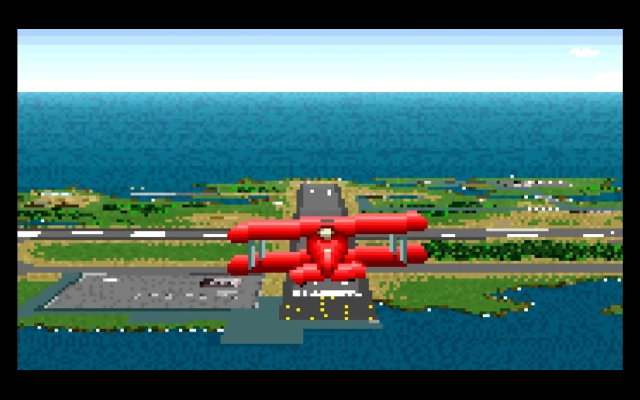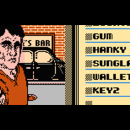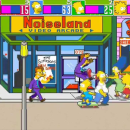Mortal Kombat – The Fighting Game That Revolutionized the Genre

Mortal Kombat, released in 1992 by Midway, is one of the most iconic and influential fighting games in video game history. Known for its brutal combat, distinctive characters, and groundbreaking digitized graphics, Mortal Kombat pushed the boundaries of what was acceptable in gaming, igniting a global sensation. With its over-the-top violence and memorable “Fatalities,” the game quickly became a cultural phenomenon, sparking controversies and debates about violence in video games while securing its place as a classic. Over the years, Mortal Kombat has continued to evolve, but the original remains a touchstone for both fans of the series and the fighting game community at large.
The Story of Mortal Kombat
The story of Mortal Kombat revolves around a martial arts tournament where the fate of Earthrealm hangs in the balance. Held once every generation, the Mortal Kombat tournament is the battleground where warriors from different realms clash to determine who will control Earth. If the forces of Outworld, led by the dark sorcerer Shang Tsung and his champion Goro, win ten consecutive tournaments, they will conquer Earthrealm.
The game features seven playable fighters, each with their own unique backstory and motivation for entering the tournament. Among them are Liu Kang, a Shaolin monk seeking to restore balance and protect Earthrealm; Johnny Cage, a Hollywood action star looking to prove himself; and Scorpion, a vengeful ninja hell-bent on destroying his rival, Sub-Zero. The diverse roster of characters, each with their own fighting styles and special moves, contributes to the depth and intrigue of the game’s narrative.
While the story is relatively simple compared to later entries in the franchise, Mortal Kombat laid the foundation for the series’ complex lore, introducing key characters and themes that would be explored in greater depth in future titles.
Engaging Gameplay and Mechanics
What set Mortal Kombat apart from other fighting games of its time was its combination of brutal, fast-paced combat and unique mechanics. The game’s controls are intuitive, utilizing a simple six-button layout that allows players to perform a variety of punches, kicks, and blocks. Each character also has special moves that are executed by specific combinations of directional inputs and buttons, making the game accessible to beginners while offering depth for more advanced players.
One of the standout features of Mortal Kombat is its distinctive “Fatalities”—gruesome finishing moves that can be performed at the end of a match to decisively defeat an opponent. These Fatalities are often violent and exaggerated, ranging from ripping out a spine to incinerating an opponent with a fireball. This mechanic added a level of spectacle and shock value to the game, cementing Mortal Kombat‘s reputation as a bold and unapologetically brutal fighting game.
Beyond the Fatalities, Mortal Kombat introduced several other mechanics that helped differentiate it from competitors like Street Fighter II. The use of digitized actors, rather than traditional sprites, gave the game a more realistic and gritty visual style that helped it stand out in arcades. The game’s emphasis on combos and timing also added a layer of strategy to each fight, as players needed to master their character’s moves and anticipate their opponent’s actions.
The inclusion of secret characters and hidden Easter eggs also became a hallmark of the Mortal Kombat series. In the original game, players could unlock a hidden fight with the mysterious green ninja, Reptile, by meeting specific conditions during gameplay. This sense of mystery and discovery added replay value and kept players coming back to explore all of the game’s secrets.
Memorable Characters and Environments
One of the key factors in Mortal Kombat‘s lasting success is its memorable cast of characters. From the iconic ninjas Scorpion and Sub-Zero to the thunder god Raiden and the shapeshifting sorcerer Shang Tsung, each fighter is visually distinctive and has a unique backstory that adds depth to their role in the tournament. The game’s character design draws inspiration from martial arts films, mythology, and fantasy, blending these influences to create a roster that feels fresh and diverse.
The game’s environments, known as arenas, are just as iconic as the characters themselves. Locations like the Dead Pool, where fighters can be knocked into a pit of acid, or the Pit Stage, where losers can be thrown off a bridge onto spikes below, contribute to the dark and violent atmosphere that defines the series. The combination of unique arenas and environmental hazards made every fight feel intense and dangerous, adding to the excitement and unpredictability of each match.
The game’s sound design also played a crucial role in creating its immersive atmosphere. From the booming announcer declaring “Finish Him!” to the visceral sound effects of punches, kicks, and fatalities, the audio in Mortal Kombat was designed to heighten the impact of every move. The music, while often subtle, added tension and drama to the fights, complementing the game’s dark and mysterious tone.
Cultural Impact and Legacy
Mortal Kombat‘s impact on both the gaming industry and popular culture is undeniable. The game became a lightning rod for controversy due to its graphic violence, leading to the creation of the Entertainment Software Rating Board (ESRB) and the introduction of age ratings for video games. Despite (or perhaps because of) the controversy, Mortal Kombat became a massive commercial success, spawning a franchise that includes numerous sequels, spin-offs, films, comics, and more.
The game’s success in arcades helped solidify the fighting game genre as a mainstay in gaming culture, and its popularity led to console ports that brought the Mortal Kombat experience to a wider audience. The home versions of the game, particularly on the Sega Genesis and Super Nintendo, became some of the best-selling games of their time.
Over the years, Mortal Kombat has continued to evolve, with each new installment building on the foundation laid by the original. The series’ commitment to innovating within the genre, while staying true to its core mechanics and themes, has allowed Mortal Kombat to remain relevant for over three decades.
The game’s legacy is also evident in its lasting influence on the fighting game genre. The introduction of finishing moves, the use of digitized actors, and the emphasis on spectacle and violence have all become defining characteristics of many modern fighting games. Mortal Kombat set a new standard for what a fighting game could be, paving the way for future titles to explore darker, more mature themes.
The Art of Combining Spectacle and Strategy
One of the reasons Mortal Kombat has endured for so long is its unique combination of spectacle and strategy. While the game is famous for its over-the-top violence and gruesome fatalities, beneath the surface lies a deep and rewarding combat system that requires skill and precision to master. This balance between flashy action and thoughtful gameplay has helped Mortal Kombat appeal to both casual players and hardcore fighting game enthusiasts alike.
The game’s commitment to pushing boundaries—whether through its innovative visuals, groundbreaking mechanics, or willingness to court controversy—has cemented its status as a cultural icon. Mortal Kombat isn’t just a game; it’s a phenomenon that has shaped the landscape of video games and continues to captivate players with its unique blend of action, strategy, and spectacle.
Conclusion
Mortal Kombat is a cultural milestone that revolutionized the genre and left an indelible mark on the world of video games. Its combination of memorable characters, brutal combat, and innovative mechanics have made it one of the most beloved and enduring franchises in gaming history. Whether you’re a longtime fan or discovering it for the first time, Mortal Kombat offers an unforgettable experience that blends strategy with spectacle in a way that few other games can match. So, choose your fighter, prepare for battle, and step into the arena of Mortal Kombat—a game that never gets old.









